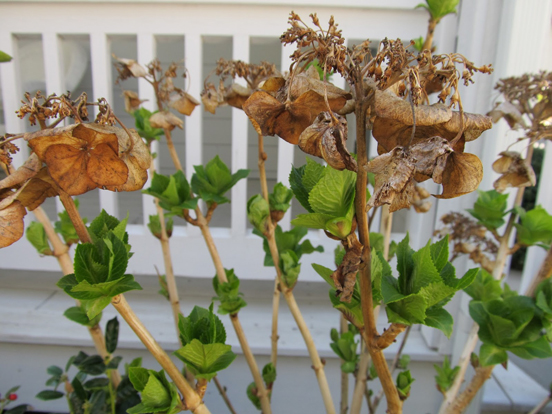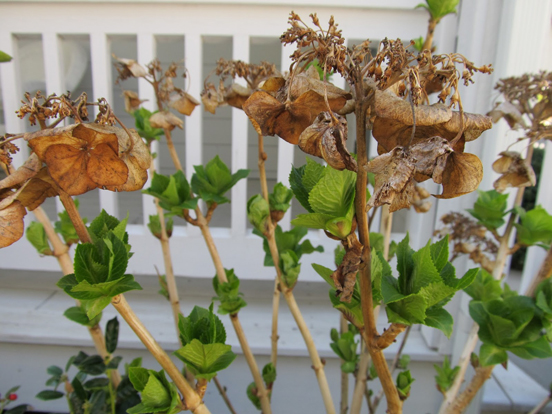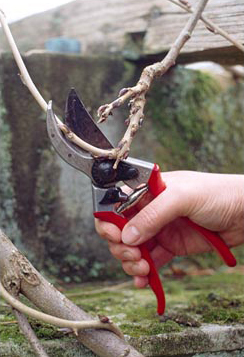Strategic Pruning for Better Bloom
Improper or badly timed pruning is often the reason that flowering shrubs bloom poorly or not at all. A little insight into a plant’s growth and flowering habits can be used to plan how and when to prune. Only a few pieces of key information are presented here, so consult a good pruning book for more detail. Highly recommended: Christopher Brickell’s Pruning & Training (republished in 2011) and Cass Turnbull’s Guide to Pruning).
These old favourites often suffer from pruning improprieties:
Abelia: Is a pretty summer flowering shrub that more often than not is planted in a spot that is too small for it. It has an open arching habit and sends up long new shoots from the base in the spring. Abelia flowers on new wood and when these new shoots are cut off in an attempt to keep the plant tidy, you are left with the older branches that don’t flower well. Ideally the older branches should be cut out after flowering, and the new ones allowed to develop in their place.
Chaenomeles: (Flowering Quince) Flower best when ‘spur pruned’, just like apple trees. (A spur is short bit of branch 0n which most of the flowering and fruiting buds are concentrated.) Encourage flowering spurs with pruning in late spring or early summer. Free standing specimens bloom best when new growth is cut back to five or six leaves. Cut back side shoots on espaliered or wall trained shrubs to 2-3 leaves. Cut back any shoots that develop later in the season the same way.
Erica: (Winter Heather) Heathers should be sheared back, every year or two, right after flowering. For a more natural look use secateurs. They won’t break from old wood, so only cut into wood that still has leaves on it. The next year’s flower buds start forming by late summer, so late pruning will reduce flowering.
Hydrangeas: Know your hydrangeas! There is no simple rule for hydrangea pruning. If you know the cultivar name of your hydrangeas Google can be very helpful in trying to figure out what to do with them. In general, older varieties of macrophylla types (mophead or lacecap) bloom on old wood. Spring pruning should consist of cutting out weak growth and cutting some of the oldest stems at ground level. Cut back remaining stems by about 12″ to pairs of fat buds. Some varieties bloom only on buds produced at the very tips of their branches, so be wary of cutting them off. A lot of the newer varieties of hydrangeas bloom on both old and new wood and can be pruned as needed to keep the size in check. Paniculata and arborescent types bloom on current season’s growth and can be cut back hard to a main framework without losing bloom. They can also be pinched back a couple of times early in the season to make them bushier.
Philadelphus: (Mock Orange) Blooms on previous season’s wood. Flowering diminishes on stems more than four years old. Cut back about ¼ of the older stems right to the ground every year to keep the plant young and floriferous. Trim side shoots to improve the shape.
Syringa: (Lilac) Prune after flowering. Cut off old flower heads and cut back long leggy growth. Before cutting woody branches look carefully at the pairs of leaves on the branch. Leaves that are directly opposite each other have flower buds in their axils. Leaf pairs that are offset from one another don’t. Cutting just above the flowering buds will encourage more blooms.
Wisteria: The main reason that wisteria doesn’t bloom is that it is not pruned properly. It also blooms on spurs that are developed by pruning. All that long whippy growth that comes in over the summer should not be cut out completely, but should be cut back to about 5-6 buds. In the winter cut those same stems back again, this time to 2-3 buds. These will become the spurs that produce the next year’s blooms.




